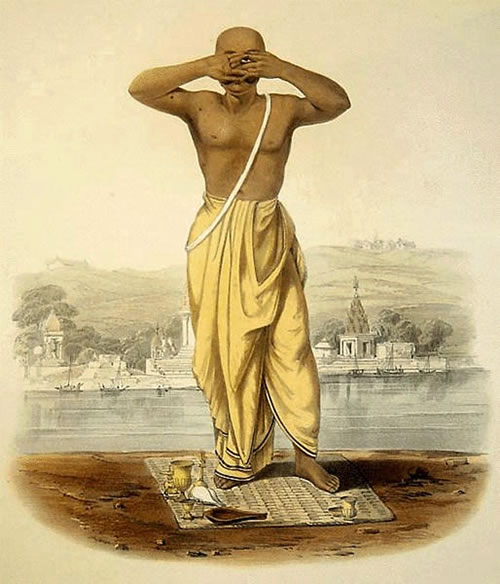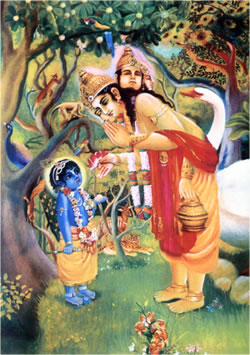How Long is a Year in
Vimsottari Mahadasa?
Page 6
1 2 3 4 5 6
Summary
The controversy of 360 versus 365 days per year has come into being because in this day and age those who are studying Vedic astrology are doing so without being properly educated in Vedic cultural traditions. From a study of the Vedas and astronomical texts we find that the Sun is the basis for measuring time. That the year is based on the seasons which is again based on the movement of the Sun. There are several types of years in vogue in Vedic culture. The only reference to a 360 day year was used strictly for sacrificial purposes, the soma-yajna, it was not a lunar or solar year, nor was it used for civil or astrological purposes. The Vedic Lunar calendar is actually Solar because it is tied to the seasons which in turn are a Solar phenomena, thus the Lunar and Solar calendars measure the same length of time and do not diverge as a function of time as does the 360d/y in comparison with the 365d/y. Confusion arose after the British introduced the Gregorian calendar into India, then Lunar tithis became mistakenly equated with Solar days and the Lunar year of 360 tithis became confused with a solar year of 360 days. Inspite of this confusion pre-British classics in Vedic astrology such as Phala Dipika clearly state that the year for Mahadasa calculation is 365 day year. The claims of those who state they get better results using a 360 day year is based on ignoring the holistic approach to astrological analysis and is more or less bluff and opinion. If we must choose on the basis of opinion then choose the opinion of the Rishis and previous acaryas who are steeped in the Vedic cultural traditions of astronomy and calendric science. The previous acaryas follow the 365 day year for mahadasa calculation. We close this discussion by quoting part of a letter by the late, learned, Vedic scholar H.R. Shankar that appeared in The Astrological Magazine:
Some Misgivings On Calculating Mahadasa by H.R. Shankar (AM, January, 1974, p.93)
"In an article appearing in the October 1973 issue of this esteemed magazine Hira Gulrajani [who advocated 360 d/y] has raised some serious doubts on the advisability of timing events guided by Vimsottari Dasa/Bhuktis in the manner in which is presently in vogue [that is 365 d/y]. He contends that there is an inherent flaw in the method of calculation and the results thus obtained are an anomaly. According to him there would be cumulative difference by as much as one month for every 6 years of age of the native between the indicated operative period under Vimsottari and that of what he terms as actual period. If we are to go with him in his line of thinking, it would turn out that a native may have to celebrate his 72 birthday even while he has yet to complete his 71st year under Vimsottari reckoning. The seed of this confusion lies apparently in the notion of the contributor is that 'The period of planets given in astrological works are rated at 30 days a month (360 days for a year of 12 months), etc.' Nothing could be more absurd than projecting, as it does, the authors of astrological works as so naive and thoroughly lacking in sense of time measure that they conceived a calendar with 360 days to a year that is untenable astronomically and ill-suited for religious and even civil purposes, let alone for timing events. Whereas, actually the same sages who have codified for us the astrological truths were also giants in the field of astronomy and have to their credit of evolving systems to compute with fine accuracy even the age of the Earth.
The basis of all our time measure is the period of our world's rotation on her axis, defined as our day. Solar days and years are marked by the consequent apparent motion of the Sun while the Moon's circuit relative to the Sun marks the lunar month. All calendars extant are mere adoptions of one of these two systems. Vimsottari being basically a stellar method, it is logical to conclude that the reference therein is to lunar months and tithis.
The synodic period of the Moon is the basis for lunar calendar. Here the reckoning is done from the day following the New Moon ending with the next New Moon. The period named as Masa or lunar month is divided into thirty equal tithis. A tithi is based on elongation taken by the Moon to cover a segment of 12° of an arc of the zodiac, each multiple of 12 as the difference in longitude marking the end of a tithi. Tithis are numbered Shukla (bright) 1 to Shukla 15 during the waxing Moon and Krishna (dark) 1 to Krishna 15 during the waning Moon respectively. The lunar months are named after corresponding solar months in which the initial New Moon falls. Twelve lunar months make one Samvastsara, each Samvastsara bearing a specific name commencing from Prabhava ending with Akshaya completing a cycle of 60 years. Vimsottari cycle of 120 years corresponds to two of lunar-year cycles.
The duration of a mean tithi being equivalent to 0.98 of a day, there will be an excess of 10.875 days in a solar year over twelve months. This difference is periodically reconciled by the introduction of 'Adhika' Masa in the lunar calendar. When two new-moon-ending lunar months begin within the same solar month, the second month is termed as Sudha or real and the first one is Adhika bearing the same name. This, incidentally, results in the first day of the lunar year always falling between March 14 and April 13/14 of English calendar. In other words, the age reckoned under lunar calendar would not be different from that of counting from English calendar except for a marginal difference of few days, plus or minus.
While the method described in astrological works for calculation of Dasa and Bhuktis is in units of Tithi, Masa and Samvatsara (as being practiced by the traditional scholars belonging to old school) the purpose would be equally served even by the direct application under English calendar. Astrological predictions being indicative rather than deterministic, a difference of few days in timing would not substantially distort the prediction. For those connoisseurs who wish to delve into suksmas division, the detailed working need necessarily be linked with the phase and movement of the Moon.
One would, however, be working on very slippery ground in trying to align operative planetary periods with corresponding events. Invariably, more than one astrological contributory factor would be involved in bringing about an event. To identify only one force, to the exclusion of other planetary factors, with unerring accuracy, as the principle contributor is more a game of guess than analysis. Being confronted with the ayanamsa riddle most of the astrologers resort to this method of stretching and pruning the operative period to accommodate past events and then take off from that point. Though this method is widely used, individual experience and talents alone are the decisive factor when it actually clicks. . . . "
While we do offer services on this site it is primarily educational. Any money that we make from our services go toward continued study and publishing of well-researched articles that set a high standard in the jyotish community. As a brahmana my primary vocation is to study and share my knowledge with others. In traditional Vedic culture the general public and especially those who benefit directly from that knowledge help to support the teacher so that he can spend more time in deep study and continue the cycle. If your knowledge has been expanded and you are inspired by the Lord in your heart please donate an amount that you are comfortable giving.
References:
AM: Astrological Magazine, The, Bangalore, India: Raman Publications.
Goswami, Danavir, 2007, compiler and editor of English translation of Bhaskaracarya's, Siddhanta-siromani with his own Vasana commentary, originally edited by Sri Bimala Prasada Siddhanta Saraswati along with his Bengali translation, Rupanuga Vedic College, Kansas City, MO.
BJS: Dikshit, Sankar Balakrishna, 1969, 1981, English Translation of Bharatiya Jyotish Sastra-History of Indian Astronomy (Two Volumes), New Delhi: Government of India Press.

